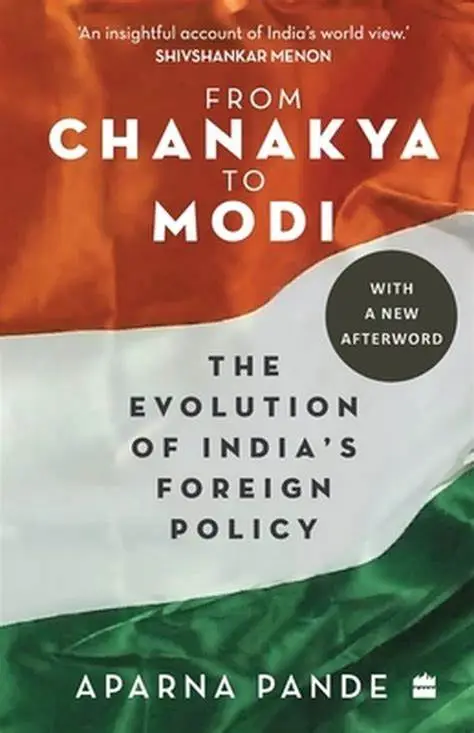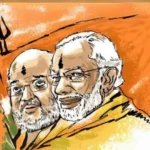Aparna Pande’s ‘From Chanakya to Modi’ entails a deep insight into the Indian foreign policy outlook coupled with the civilizational roots of Indian history. Tracing back to the imperial institutions of the British Raj and Mughal empires whose extended periods have left marks on India’s current outlook, the Indians are mainly obsessed with their long-lasting civilizational heritage which is engraved in the current foreign policy culture. While tracing the Indian foreign policy culture from the roots of Chanakya Kautilya to the Modi, India is entailing autonomy and independence in the decision-making and seeking immunity from the dictation of the Great powers.
The desire for modernity and conduct in the modern world of India is inextricably related to an international vision formed by India’s rich history and tradition-influenced decision-making. The book provides an apt introduction to realist and idealist tendencies of Indian strategic thought to thousands of years in history.
The author in her book forms the premise of Indian foreign policymaking following thematic patterns throughout history. She compares this to recurrent themes in the American foreign policy, which included four approaches of foreign policy. Such as Hamiltonian, Wilsonian, Jeffersonian, and the Jacksonian view which have been prevalent in American policymaking throughout history. Pande forms a similar analogy for India by entailing upon Stephen Cohen’s classification of Gandhian, Nehruvian, Realists, and Revivalists.
The policy of multilateralism enables India to play a significant role in the complex structure of the international arena. While looking at India’s view of the world over two millennia the foreign policy outlook depicts continuity rather than change.
Kautilyan Discourse in the Statecraft
340 BCE is a significant time of Indian political history when a Brahmin youth set out to avenge the murder of his father and ends up becoming a strong strategist uniting India against the invasion of Alexander the Great. After getting a wicked and astonishing victory he successfully installed Chandragupta Maurya as an emperor of the Mauryan empire. The world knows this strategist Chanakya Kautliya as Indian Machiavelli, who crafted the mechanism of statecraft in his masterpiece Arthashahtra. The Curzonian oriented Nehruvian foreign policy is a prime inspiration of his principle thoughts of statecraft.
Also Read:Ram Mandir: The Symbolic Inauguration
The modern rulers of India, Nehru, Indira Gandhi and Modi all fall under the category of Kautlya treatises. Kautliyan discourse echoes in the rhetoric of the foreign policy of Nehru when he came up with deception of the moralistic policy of Panjsheel but in reality, was instrumental in building a strong military force which enables India as a driving force in the South Asian region.
In every policy it makes, and every move it takes, India emphasizes sovereignty. Pande attributes this autonomy to India’s hesitancy in becoming an official ally of the major powers of the world.
Influence on Modi’s India
Indian posture of non-alignment is a clear example of Kautilyan realism. The reality of the contemporary world adapts this model and is a clear example. However Indian desire for autonomy in decision-making and keeping South Asia immune from Great power politics was not fulfilled during the Cold War when it turned towards the US after facing a humiliating defeat in the hands of the People Liberation Army. India is trying to maintain its outlook aligned with the strategic culture of its glorious past.
Like Nehru, Indira Gandhi also followed the footsteps of Chanakya. By laying her mistrust on alliances and pursuing her famous Indira doctrine later called the Indian Monroe Doctrine, which implies that Indian neighbours must follow the Pro-Indian policies and no foreign power can meddle in the affairs of South Asia. The foreign influence in the region is considered a negative phenomenon. Unless and until it recognizes the predominance of India in the region.
This millennia-old rhetoric also echoes in Modi’s policy posture because it recognizes the US power in the region after it accepted the Indian predominance in the area. For the reason that the excessive US involvement is detrimental to the so-called Indira’s doctrine. Modi tried to revive the troubled Indo-Pakistan relations. However, the Uri and Pathankot strike halted the process of reconciliation. Resultantly, in return, Modi abandoned the SAARC summit in Islamabad. In the light of this approach, the future of conflict management is a lost cause for SAARC. India considers South Asia central to its external relations through which India can project its image in the international arena. Indian foreign policy elite believes that India is a socio-cultural and economic hub of South Asia. Therefore, the US, China, and the West should recognize their dominance in the region.
An India-Centric Bias
Indian thoughts and concepts are the core of Aparna Pande’s book. However, it has ignored the thinking of the people residing in the neighborhood. This narrowed approach has made this book somewhat biased towards the Indian narrative. All the while ignoring the factors residing in the vicinity of India. Considered as the liberation of the people of East Pakistan was the act of sending the Indian Army to Bangladesh. This clearly voices the Kautliyan thought that the enemy of my enemy is a friend.
Hence the Kautliyan analogy is making India more powerful in the future due to its multi-dynamic approach. The militarization of Kashmir shows the Indian ambitions of maintaining the status quo in the region. In a nutshell, Aparna Pandey’s approach voices the idea of the Indian civilizational aspect. It also entails its impact on the current foreign policy culture of India. The Indian ruling elite sees the South Asian region as central to their concerns. This provides the prelude for India to project its prowess in the international arena.
Hammad Waleed is a National Defense University graduate with a keen eye on regional dynamics, history, and global affairs.



![Afghan refugees arrive at the Torkham border crossing in Pakistan to cross over into Afghanistan on November 2, 2023 [Image via Al Jazeera]](https://southasiatimes.org/wp-content/uploads/2022/11/Afghan-refugees-arriving-at-the-Torkham-Border-crossing-1699011483-150x150.webp)

Add a Comment